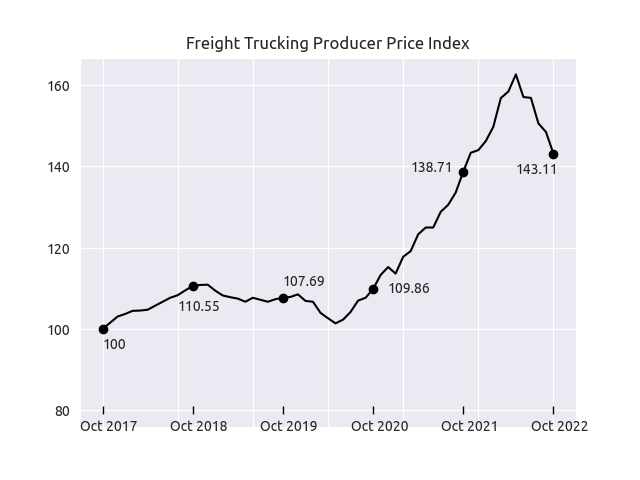Why is inflation better than deflation?
Understanding why central banks prefer inflation to deflation helps explain what monetary policy is trying to achieve.
As the world deals with the highest inflation since the 1970s, central banks around the globe are raising interest rates in an attempt to cool rising prices. Their actions are justified. High inflation is both politically unpopular and economically destructive, as people see their grocery bills rise and the real value of their savings drop. But if price increases are considered bad, why aren’t price decreases considered good? Understanding the perils of deflation grants some insight into why price changes are so important, and what exactly central banks are trying to achieve through monetary policy.
The recognition that deflation is something to be avoided is explicit in the inflation targets of central banks, which typically range from 0-2%. No central bank has a negative inflation target. At first glance this is unintuitive, since most people would consider it a good thing if the cost of their Netflix subscription fell from $20 to $10. This common reaction, reflecting the belief that cheaper goods are always better for consumers, motivates a vital distinction between supply-driven deflation and demand-driven deflation.
Supply-driven deflation, which occurs when firms manage to expand supply or become more productive, is not generally a concern for central banks, as long as the price decrease is limited to a single sector. Often, such deflation is a healthy market reaction to previous shortages, like the price decreases seen in trucking costs over the past year. But when price decreases are broad-based, impacting multiple sectors, they are often the result of falling demand. Since one person’s expense is another person’s income,1 this drop in demand (and the associated deflation) tends to increase unemployment and push the economy toward recession.
Still, this makes it seem that deflation is merely a symptom of a bad economy, rather than a cause. If people stop spending money, which causes both unemployment and deflation, it might seem mystifying why central banks would be concerned about the existence of even small amounts of deflation. The common justification is that central banks are concerned about a deflationary spiral. Consider someone thinking about whether to purchase a new car that costs $30,000. If deflation is rampant, they might expect the price to fall to $25,000 a year from now, and so would put off making the purchase. Since a dollar tomorrow is worth more than a dollar today, people would prefer to delay consumption, causing prices to fall even further as businesses desperately try to sell their products.
While this logic, which shows how prices and demand can fall in a self-reinforcing loop, seems like a convincing explanation for why central banks don’t want any deflation, it has a number of conceptual flaws. For one, the same logic can apply to inflation. If people expect prices to rise tomorrow, they’ll spend today, which should cause prices to rise in a similarly disastrous spiral. But this justification is not used for central banks to avoid any inflation. Moreover, deflationary spirals are unlikely because they work against people’s natural time preferences. People prefer to eat a cookie today rather than next week, even if they expect the cost of the cookie to fall by next week.
In reality, as research from the Bank for International Settlements shows, moderate deflation is not as destructive as proponents of the deflation-spiral hypothesis assert. But central banks don’t have perfect control over price levels, and there are valid reasons why it’s better to err on the side of inflation rather than deflation, and, by extent, to embed inflation expectations in society. While the price level does influence consumption decisions at the margin (meaning inflation does nudge people to buy things), the more important impact is the way changes in the price level affect outstanding debt levels.
Deflation increases the real value of debts, transferring wealth from borrowers to lenders. Suppose you borrow $1,000 today for repayment in one year. If prices fall during the year, meaning that $1,000 can buy you more at the end of the year than at the start of the year, then you are repaying more than you borrowed, in real terms.2 Politically, this is deeply unpopular, since lenders tend to be wealthy owners of capital while borrowers tend to be workers. In fact, one of the most famous speeches in American history, William Jennings Bryan’s “Cross of Gold” speech, was focused on this somewhat arcane economic phenomenon, decrying deflation for increasing the real value of farmer’s mortgages.3
Economically, deflation will lower the value of collateral and incomes even as debts become more burdensome. Suppose someone borrows $800,000 to purchase a home worth $1 million. If deflation is persistent, the value of the home will fall year after year,4 decreasing the security for the lender and threatening to trap the borrower with an underwater loan. Moreover, incomes will fall because businesses will have to accept lower prices on their products, increasing the risk the borrower cannot pay their mortgage. These dynamics all played a role in perpetuating the Great Depression. Undercollateralized mortgages and falling incomes resulted in higher default rates, which caused many banks to collapse. For borrowers that could make good on their loans, they found their debt burdens increasing over time, making them poorer. Economically and politically, raising the real debt burden of society is worse than lowering it, which is why central banks prefer inflation to deflation.5
In the current environment, few central banks have reason to worry about deflation. But as the world slowly adjusts to a higher price level, long-term demographic changes in the developed world are likely to cause a resurgence in concern about deflation. This is a reality that Japan has dealt with for the last several decades, with an aging population resulting in low growth and price declines. The Bank of Japan has developed an increasingly innovative playbook to fight deflation, including yield curve control and financing massive amounts of government debt. In the long-term, central banks in America and Europe may find themselves using the same tools, as they try and make sure “it” doesn’t happen here.
1: At an individual level, increasing saving at the expense of consumption might be a good thing. But for an entire economy, it can be disastrous, an idea known as the Paradox of Thrift. This is a special case of the fallacy of composition, which is the mistake of thinking that the optimal choice for an individual is the optimal choice for all individuals to make. For a concrete example, think about people evacuating a crowded movie theater. If one person pushes their way to the front, they’ll probably get out first. But if everyone pushes their way to the front, there’s going to be a deadly crush.
2: As long as interest rates are positive, of course, you’ll always be repaying more than you borrowed, but we avoid adding any interest here for the sake of simplicity. If the interest rate were 10%, meaning you had to repay $1,100 at the end of the year, but deflation occurred, then the $1,100 you have to repay is still worth more than you expected. Another way to see this is that a negative inflation rate in the Fisher equation causes real interest rates to rise, a gain for the lender.
3: Also see this paper which helps explain why the rentier/creditor class was so opposed to devaluing currency in terms of gold at the end of WW2. Devaluing currency allows inflation to occur, which lowers the real value of fixed claims but also lets banks and governments conduct expansionary policy. Creditors pushed for no devaluations, which would have meant deflation at the expense of laborers/debtors.
4: It might seem contradictory that deflation can cause asset values to drop even while benefiting owners of capital. The important thing to remember is that deflation raises the value of fixed claims, like the bonds or loans held by creditors. Although there are forms of deflation that will not necessarily lead to asset price deflation (like sector-specific technology improvements), embedded deflation expectations should see nominal asset values fall due to lower incomes, lower profits, and higher interest rates.
5: While memories of the Great Depression mean that debt levels are the main reason inflation is preferred to deflation, there are other important reasons not mentioned here. First, inflation results in nominal interest rates above zero, giving central bank’s the firepower to lower rates during recessions without needing to cross the zero bound. Second, inflation is believed to give the labor market more flexibility by letting real incomes fall without needing to cut nominal incomes. This should result in more people being employed (albeit at a lower income) during downturns.





